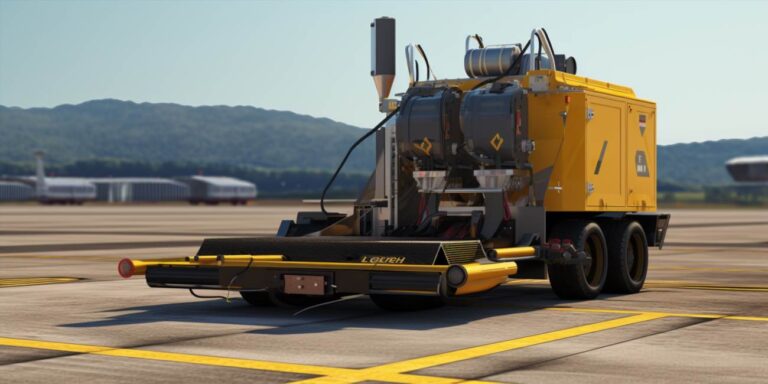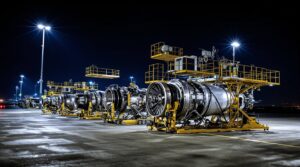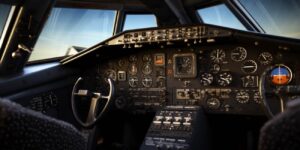Ground power units come in various sizes and capacities, catering to the diverse needs of different aircraft types. The primary purpose of a GPU is to supply electrical power to an aircraft during pre-flight preparations, maintenance activities, or when the main engines are not in operation. This not only conserves fuel but also minimizes wear and tear on the aircraft’s internal components.
What makes a ground power unit of aircraft indispensable is its ability to provide a stable and reliable source of power. This is particularly crucial during the boarding process, where various systems such as air conditioning, lighting, and avionics need to be operational. GPUs ensure that passengers and crew members experience a comfortable and safe environment while the aircraft is on the ground.
One key feature of a ground power unit is its compatibility with different aircraft models. The aviation industry embraces a wide range of planes, each with its own power requirements. A versatile GPU can accommodate these variations, making it a vital tool for ground operations at airports around the world.
Understanding the components of a ground power unit sheds light on its inner workings. Typically, a GPU consists of a generator or power source, control panels, and various safety mechanisms. The generator is responsible for producing the electrical power, while the control panels allow ground personnel to manage and regulate the power supply to the aircraft. Safety mechanisms, such as circuit breakers, protect both the GPU and the aircraft from electrical issues.
In some cases, ground power units are mobile, mounted on trucks for easy transportation between aircraft on the apron. This mobility adds flexibility to airport operations, allowing for efficient power supply to multiple planes without the need for a fixed infrastructure.
Investing in advanced ground power units is a priority for airlines and airport authorities. Modern GPUs are equipped with intelligent systems that monitor power usage, optimize fuel efficiency, and provide real-time diagnostics. These features contribute to a more sustainable and cost-effective ground operation for the aviation industry.
Key functions and purposes of using ground power unit at the airport
At the bustling hub of aviation activity, the airport, the Ground Power Unit (GPU) plays a pivotal role in ensuring the seamless operation of various aircraft on the ground. The primary function of a GPU is to supply electrical power to an aircraft while it is parked at the gate or on the apron, with its main engines shut down. This electrical power is indispensable for a myriad of crucial activities, ranging from cockpit preparation to maintenance tasks.
One of the key purposes of using a Ground Power Unit is to provide a stable and reliable source of power to the aircraft’s avionics and other systems. Aircraft systems require a continuous and high-quality power supply to maintain essential functions such as navigation, communication, and monitoring. The GPU serves as a lifeline during the crucial turnaround process, ensuring that the aircraft is ready for its next flight in the shortest possible time.
Another vital aspect of the GPU’s role is in supporting aircraft maintenance. When an aircraft is on the ground for scheduled maintenance or repairs, it often needs to power its systems without relying on its own engines. The GPU steps in to provide the necessary electrical power, allowing maintenance crews to perform checks, inspections, and repairs without the need to start the aircraft’s engines.
The flexibility of Ground Power Units is noteworthy. They are compatible with a variety of aircraft, ranging from small regional jets to large international carriers. This versatility is crucial for airports catering to a diverse fleet of airlines. The ability of a GPU to supply power to different types of aircraft contributes significantly to the efficiency and adaptability of ground operations.
Moreover, the use of GPUs aligns with environmental sustainability goals in the aviation industry. While aircraft engines are known for their fuel consumption and emissions, utilizing ground power during ground operations helps reduce the overall environmental impact. By allowing aircraft to rely on external power sources, especially when parked for extended periods, airports can contribute to a greener and more sustainable aviation ecosystem.
In a bustling airport environment, where time is of the essence, the speed and efficiency offered by Ground Power Units cannot be overstated. Quick turnarounds are essential for maintaining optimal flight schedules, and the ability to swiftly connect and disconnect the GPU from an aircraft streamlines the entire process. This efficiency not only benefits the airlines but also enhances the overall operational efficiency of the airport.
Types and models of ground power units used by airlines
Ground Power Units (GPU) play a vital role in the aviation industry, providing essential electrical power to aircraft on the ground. These units ensure a seamless transition between onboard and ground power sources, facilitating various pre-flight and post-flight activities.
One crucial component of a GPU is the generator. This device converts mechanical energy into electrical power, serving as the primary source of electricity for the entire unit. The generator’s capacity is a key consideration, as it determines the amount of power available for aircraft systems.
Within the GPU, a converter is employed to modify the electrical output from the generator. This is crucial because aircraft require different voltage and frequency specifications. The converter ensures compatibility between the GPU’s power output and the aircraft’s electrical system, allowing for a safe and efficient transfer of power.
Transformers are another integral component, serving to adjust voltage levels as needed. A transformer is responsible for stepping up or stepping down the voltage, aligning it with the aircraft’s requirements. This ensures that the power delivered is not only compatible but also optimized for the specific aircraft being serviced.
Moreover, cables are essential elements in the GPU setup. These cables act as conduits for the electrical power to flow from the GPU to the aircraft. Robust and well-insulated cables are crucial to minimize power loss and ensure a secure connection. Different aircraft may require varying cable lengths and specifications, necessitating a versatile cable system in the GPU.
Efficiency in the power transfer process is paramount, considering the diverse range of aircraft that GPUs serve. The seamless interplay between the generator, converter, transformer, and cables ensures that aircraft receive the necessary power for operations without risking damage to sensitive electronic systems.
Advantages of using mobile ground power unit for aircraft
Aircraft operations demand seamless and reliable power sources, making efficiency and reliability paramount in ground support equipment. Mobile Ground Power Units (MGPU) have emerged as a game-changer in this realm, offering a host of advantages that significantly enhance aircraft ground operations.
One of the standout features of MGPU is their unparalleled efficiency. Unlike conventional fixed power sources, mobile units can be strategically positioned based on the aircraft’s location, optimizing power distribution and minimizing energy wastage. This adaptability translates into cost savings and reduced environmental impact, aligning with the aviation industry’s growing emphasis on sustainability.
When it comes to reliability, MGPU takes the lead. These units are designed with redundancy and robustness in mind, ensuring a continuous and stable power supply. In critical scenarios, where uninterrupted power is non-negotiable, MGPU proves its mettle by providing a fail-safe solution. Airlines and ground crews rely on the consistency offered by MGPU to avoid operational disruptions and adhere to tight schedules.
The operation of MGPU is another aspect that sets it apart. These units are engineered for user-friendly operation, featuring intuitive interfaces and automated functionalities. Ground crews can swiftly connect and disconnect the unit, minimizing turnaround times and enhancing overall operational efficiency. Additionally, MGPU’s mobility allows it to be quickly deployed to any location on the airfield, offering a versatile solution for varied aircraft parking configurations.
Table 1: Advantages of MGPU in Aircraft Operations
| Advantage | Description |
|---|---|
| Efficiency | Mobility for strategic positioning, optimizing power distribution. |
| Reliability | Redundancy and robust design for continuous and stable power supply. |
| Operation | User-friendly interfaces and automated functionalities for swift deployment. |






